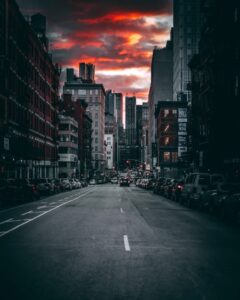"High-Trauma Stretches" of Cleveland Streets
Cleveland, Ohio, is already known as one of America’s most segregated cities. As recently as 2018, the Anti-Discrimination Center found that, while the city has made some progress since the late 1960s, Cleveland’s neighborhoods remain “hyper-segregated.”
Therefore, it is no surprise that Cleveland’s most dangerous streets for drivers and pedestrians alike are also segregated: a city task force called the Vision Zero Task Force recently found that one-third of all fatal crashes occur along just 7 percent of Cleveland’s streets. An average of 37 people are killed in traffic accidents each week on Cleveland’s streets, while six more are seriously injured.
Task Force Findings
“The task force found that…Most of the high-trauma stretches are on the city’s East Side and run through neighborhoods that are largely poor and [where] a majority of the residents are African American,” Cleveland.com reported in an article on Vision Zero’s findings. “The longest high-trauma stretch is a 4-mile portion of Kinsman Road from East 55th Street east to the Shaker Heights border. The two high-trauma stretches closest to downtown are along West 25th Street and East 55th Street.”
In keeping with its name, Vision Zero’s ultimate goal is zero traffic fatalities a year in Cleveland. However, there is much work to be done before that vision becomes reality. The task force reported several other grim findings, such as that between the years 2008 and 2017, pedestrian fatalities on Cleveland streets increased by 35 percent (fortunately, all other traffic deaths combined decreased 6 percent in the same time period). Traffic accidents were the leading cause of death for children, youth and young adults ages 8 to 24. And, perhaps most startling, more than 15 percent of all traffic fatalities occurred on just a little over 1 percent of Cleveland’s streets.

History of Cleveland Roads
Many Clevelanders are familiar with the city’s infamous “Dead Man’s Curve,” an almost 90-degree bend in I-90 near downtown. This poorly designed stretch of road became so well-known among locals in the 1970s and 1980s, it even inspired artwork. “Dead Man’s Curve became so notorious that a local artist, Joe Gierlach, even proposed a statue to be called ‘The Ghost of Dead Man’s Curve’ that would serve as a sort of guiding light, guardian angel, and warning for drivers. (The idea wasn’t too well received),” travel Web site The Culture Trip reported in 2018.
As with so many other things in American culture, the focus on Dead Man’s Curve as Cleveland’s most dangerous driving spot may have been a reflection of privilege, not reality. Between 1979 and 1987, only seven people were killed on Dead Man’s Curve. Still, it was seven people too many, leading local authorities to lower the speed limit to 35 miles per hour. Today, Dead Man’s Curve doesn’t even rank among the top ten most dangerous streets in Cleveland: that grim distinction goes to St. Clair Avenue, Kinsman Boulevard, and E. 55th Street—all on Cleveland’s East side, and all located in some of the metro area’s poorest neighborhoods.
Vision Zero’s Four-Point Plan
In order to reduce traffic fatalities throughout the city, but especially in the hardest-hit, already impoverished areas, Vision Zero proposed a four-point plan: Safe Streets, Safe Speeds, Safe Vehicles, and Safe People. Safe Streets means modifications like curb extensions and high-visibility crosswalks, as well as redesigns that help reduce speeding, like traffic circles. Safe Speeds may mean reducing the speed limit on certain streets. Vision Zero notes that at speeds of 20 miles per hour, there is only a 10 percent risk of a traffic fatality or serious injury in a crash; at 40 miles per hour or more, there is an 80 percent risk. Safe Vehicles would set new limits on the size and weight of trucks and buses allowed on city streets, while Safe People would work to eliminate dangers like distracted driving, drunk driving, and texting while driving.
“We will work to ensure that equity remains a value that is reflected in our work by creating the conditions for safe and equitable mobility in our community and acknowledging mobility as a civil right,” Vision Zero said in its report. “We envision a City where our roads become a sanctuary that is protected, secure, free, and provides comfortable and reliable travel for users of all backgrounds.”

